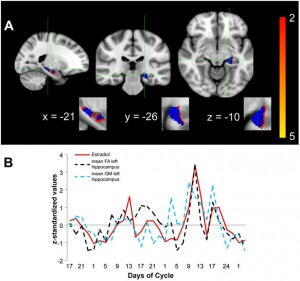My cousin has celiac disease, my boyfriend is allergic to gluten, and best friend is deathly allergic to gluten and dairy, so while I myself have no allergies, it’s safe to say I have experience in knowing people with them. While celiac disease is a different ballpark than plain allergies, I’ve always been curious as to why I was lucky enough to have no allergies and my friend has two major ones. I skimmed around Google and instead of finding what I was initially searching for, I found a study called Small Amounts of Gluten in Subjects With Suspected Nonceliac Gluten Sensitivity: A Randomized, Double-Blind, Placebo-Controlled, Cross-Over Trial . The experiment in question set forth to test if individuals who believed their issues in their G.I. system were due to the gluten or to something else.
The null hypothesis for the experiment would be that consuming gluten did not negatively affect a persons G.I. system, and the alternative hypothesis would be that consuming gluten would negatively affect a persons G.I. system. For the actual double-blind placebo test, 61 people who believed that they had issues with their G.I. system due to gluten intake were randomly split into two groups. For the first week they were given a table containing 4.375 grams of gluten a day or a tablet of rice starch; For the second week, the two groups would switch. During the two weeks, the individual would wrote down their symptoms, such as bloating, pain, and depression. Once the experiment was over, the results were studied and researchers found that across the board consuming gluten caused a large increase in the symptoms the patient recorded, corresponding to the alternative hypothesis.
be that consuming gluten would negatively affect a persons G.I. system. For the actual double-blind placebo test, 61 people who believed that they had issues with their G.I. system due to gluten intake were randomly split into two groups. For the first week they were given a table containing 4.375 grams of gluten a day or a tablet of rice starch; For the second week, the two groups would switch. During the two weeks, the individual would wrote down their symptoms, such as bloating, pain, and depression. Once the experiment was over, the results were studied and researchers found that across the board consuming gluten caused a large increase in the symptoms the patient recorded, corresponding to the alternative hypothesis.
While I do think that this studies findings are valid, since gluten sensitivities are a very common occurrence nowadays and for someone with a sensitivity to have these symptoms makes sense. But, I felt that these results were easy to predict since the sensitivity was known. Personally, I don’t have any allergies, but I know that going gluten free has been a fad diet for awhile since people believe that since cutting gluten improved the lives of those with a sensitivity, it will improve their health even if they don’t have a sensitivity. I did some research to see if that was necessarily true and while I wasn’t able to find a study relating to my search, I did come across an article from LiveScience.com titled Gluten-Free Diet: Benefits & Risks.
What I read essentially stated that if you don’t have a sensitivity, cutting gluten out of your diet will do nothing for one’s health. For those who feel like cutting gluten out of their diet has significantly improved their health, all that they’re feeling is the reduction of foods full of carbs and sugars. According to the site, gluten is just protein that keeps bread together and does nothing harmful to one’s health as long as the person is able to digest it. In fact, nutritionists say cutting gluten out deprives the body of all the nutrients in gluten products that the body needs!
In my opinion, I felt that the first study I discussed was not at all surprising. While it would have been interesting if the results had gone the direction of the alternative hypothesis, I knew that that was unlikely. While it also may have been interesting to have seen how third variables come into play, it would be hard to dispute the role of gluten in any of these instances.
In the end, the diet one consumes is purely up to choice and how it makes them feel. If you do decide to cut out gluten, though, make sure you fulfill all the nutritional needs you will have. While I don’t believe that any of the results found were groundbreaking, it is interesting to see the bodies reaction to foods it can’t process and how a simple diet change can completely affect one’s health. So, maybe if you’re feeling any of the symptoms I mentioned earlier, try cutting gluten out for a week and see how you feel!
Sources:
Study: http://www.sciencedirect.com/science/article/pii/S1542356515001536
Site on going gluten free: http://www.livescience.com/53061-gluten-free-diet-facts.html
Photo: https://goo.gl/images/g28fnQ








